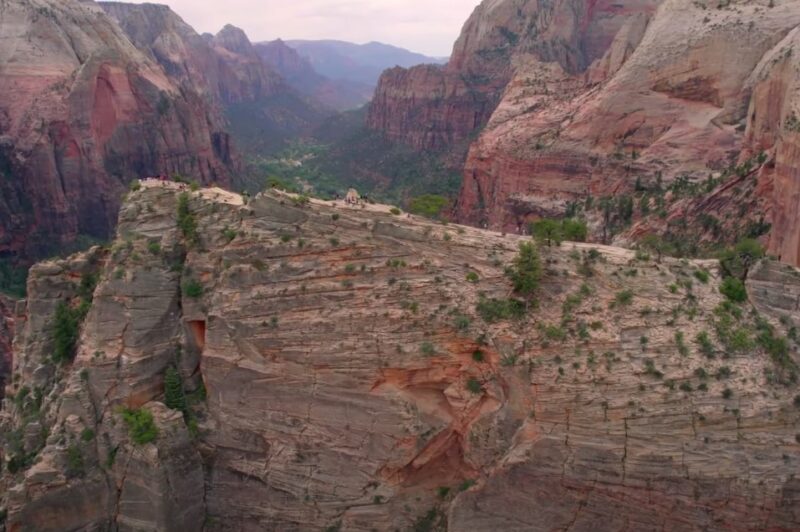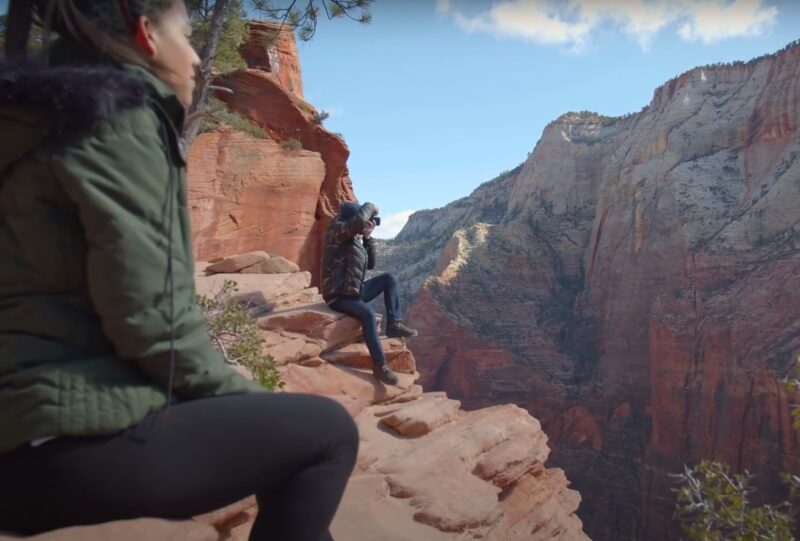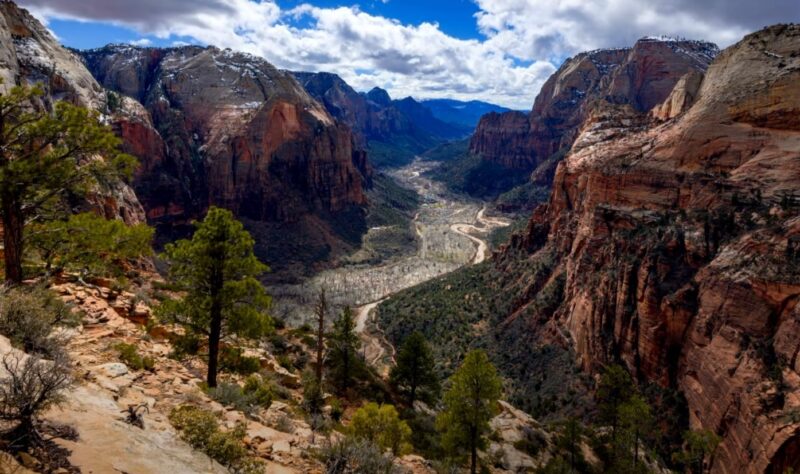Zion National Park is one of the most popular and scenic destinations in the United States, attracting millions of visitors every year. The park offers a variety of trails, from easy walks to challenging climbs, that showcase the stunning beauty and diversity of the park’s landscape.
Hiking in Zion National Park, like other challenging trails including the Appalachian Trail, carries inherent risks and dangers. Unfortunately, some hikers have faced fatal consequences during their adventures.
In this blog post, we delve into the number of hiker fatalities in Zion National Park, examine the primary causes of these tragic incidents, and provide insights on how to hike safely and responsibly, ensuring an enjoyable experience in this majestic park.
Hiker Fatalities
According to the National Park Service (NPS), there have been at least 18 deaths from falls in Zion National Park since 2000. This does not include other causes of death, such as drowning, heat exhaustion, hypothermia, or medical emergencies.
The NPS does not provide a comprehensive list of all fatalities in the park, but some of the most recent and notable cases are.
Recent Notable Incidents
In October 2021, a 26-year-old woman from California experienced a tragic accident at Angels Landing in Zion National Park, falling approximately 100 feet. She was with a friend on this well-known but perilous trail when she tragically slipped off the narrow path.
In a separate incident in September 2021, a 43-year-old Utah man lost his life on Zion’s Observation Point Trail. While hiking with his family, he unfortunately lost his footing and fell around 50 feet.
Earlier, in February 2021, a 43-year-old Arizona woman met with a fatal accident on Deertrap Mountain Trail in Zion. Hiking solo, she was reported missing and, sadly, her body was found after a two-day search, having fallen about 1,000 feet.
In November 2019, a 19-year-old woman from Maine also suffered a fatal fall at Angels Landing. She was hiking with friends when she slipped and fell approximately 50 feet.
Lastly, in July 2019, a 35-year-old man from Nevada had a fatal accident on the Emerald Pools Trail in Zion. Hiking with his family, he climbed over a railing and fell about 80 feet.
Context and Considerations
These are just some of the tragic examples of hikers who lost their lives in Zion National Park. The actual number of fatalities may be higher, as some deaths may not be reported or publicized by the NPS or the media.
Main Causes of Fatalities

The main causes of death in Zion National Park are falls, flash floods, and heat-related illnesses. These hazards are often exacerbated by the park’s terrain, weather, and crowds.
Falls

Falls are the most common and deadly cause of death in Zion National Park. Many of the park’s trails involve steep and exposed sections, where a slip or a stumble can result in a fatal drop.
Some of the most notorious trails for falls are Angels Landing, Observation Point, and Cable Mountain. These trails require hikers to navigate narrow ledges, sharp switchbacks, and metal chains, with sheer cliffs on both sides.
Even on easier trails, such as Emerald Pools or Riverside Walk, hikers can fall off the edge of the trail or into the water if they are not careful. To prevent falls, hikers should follow these safety tips:
- Stay on the designated trail and do not wander off or cut switchbacks.
- Do not climb over railings, fences, or signs that are meant to protect you and the park’s resources.
- Wear appropriate footwear with good traction and ankle support. Avoid sandals, flip-flops, or bare feet.
- Keep a safe distance from the edge of the trail and do not lean over or look down. Use caution when taking photos or using binoculars.
- Do not hike alone and stay with your group. Keep an eye on children and pets and do not let them run or play near the edge.
- Do not hike in the dark or in poor visibility. Use a flashlight or headlamp if necessary.
- Know your limits and do not attempt trails that are beyond your skill level or comfort zone. Turn back if you feel tired, dizzy, or scared.
Flash Floods
Flash floods are rapid and intense flows of water that can strike in areas like rivers, streams, or canyons, often triggered by intense rainfall or melting snow. Characterized by their power to carry debris like rocks, trees, vehicles, and even people, flash floods pose a significant threat.
In Zion National Park, this danger is heightened due to the park’s geography. Many popular sites, including The Narrows, The Subway, and Orderville Canyon, are situated in narrow, deep canyons.
These locations are particularly susceptible to sudden flooding, potentially trapping and endangering hikers within minutes. To enhance safety and mitigate the risk of flash floods, hikers are advised to adhere to the following guidelines:
- Check the weather forecast and flash flood potential before you enter the park and before you start your hike. Do not hike in canyons if there is a chance of rain or thunderstorms in the area.
- Obtain a wilderness permit and a weather report from the visitor center if you plan to hike in the backcountry or in slot canyons. Follow the instructions and regulations of the park staff.
- Watch for signs of a flash flood, such as dark clouds, thunder, lightning, rain, or rising water levels. If you see or hear any of these, get out of the canyon as quickly as possible and seek higher ground.
- Do not enter a canyon that is already flooded or that has water flowing through it. Wait until the water subsides or find another route.
- Do not camp or park your vehicle in a wash, dry creek bed, or low-lying area that can be flooded. Move to higher ground if you see or hear water approaching.
Heat-Related Illnesses

Heat-related illnesses encompass various conditions that arise from exposure to excessive heat and insufficient hydration. This spectrum includes heat cramps, heat exhaustion, heat stroke, and hyponatremia.
Such illnesses can impact anyone, irrespective of their age, physical condition, or overall health. Symptoms range from muscle cramps and nausea to more severe manifestations like confusion, seizures, or even coma.
Without timely and appropriate intervention, heat-related illnesses can be life-threatening. To safeguard against these conditions, hikers are encouraged to adhere to the following preventive measures:
- Drink plenty of water, at least one gallon per person per day, and more if you are hiking or sweating. Do not wait until you are thirsty to drink. Carry a water bottle or a hydration pack and refill it at designated water stations in the park.
- Avoid alcohol, caffeine, and sugary drinks, as they can dehydrate you and impair your judgment.
- Eat salty snacks, such as nuts, pretzels, or crackers, to replenish the electrolytes that you lose through sweating. Do not eat too much or too little, as both can affect your hydration and energy levels.
- Wear lightweight, loose-fitting, and light-colored clothing that covers your skin and protects you from the sun. Wear a hat, sunglasses, and sunscreen with SPF 15 or higher. Apply sunscreen frequently, especially on exposed areas such as your face, neck, ears, and hands.
- Avoid hiking during the hottest part of the day, usually between 10 a.m. and 4 p.m. Hike in the morning or evening, when the temperatures are cooler and the sun is less intense.
- Seek shade and rest frequently, especially if you feel tired, dizzy, or nauseous. Do not push yourself beyond your limits or ignore the signs of heat-related illness.
- Know the symptoms and treatment of heat-related illness and how to recognize them in yourself and others. If you or someone in your group shows signs of heat-related illness, stop hiking, find a cool and shady place, and call for help.
FAQ
What should hikers do to stay safe on steep and exposed trails?
Hikers should always stay on designated trails, avoid climbing over railings, and wear appropriate footwear with good traction. Keeping a safe distance from trail edges, hiking in groups, avoiding hiking in the dark or in poor visibility, and recognizing personal limits are crucial for safety on steep trails.
How can visitors avoid flash floods?
To avoid flash floods, check the weather forecast and flash flood potential before hiking, especially in canyons. Hikers should obtain a wilderness permit and a weather report for backcountry or slot canyon hikes, and be vigilant for signs of flash floods, such as dark clouds or rising water levels. Always seek higher ground immediately if signs are present.
What are the best practices to prevent heat-related illnesses?
Preventing heat-related illnesses involves drinking plenty of water, avoiding alcohol and caffeine, eating salty snacks, wearing appropriate clothing, hiking during cooler parts of the day, seeking shade, and resting frequently. Knowing the symptoms of heat-related illnesses and how to respond is also crucial.
Are there specific times of day that are safer for hiking?
Yes, hiking in the early morning or evening, when temperatures are cooler and the sun is less intense, is safer. It’s advisable to avoid hiking during the hottest part of the day, typically between 10 a.m. and 4 p.m.
Can hikers bring pets on trails?
Hikers should check specific trail regulations regarding pets, as many trails in Zion National Park do not allow them. For trails where pets are allowed, keeping them on a leash and under control is essential for their safety and the safety of wildlife in the park.
Final Words
Zion National Park is a wonderful place to explore and enjoy nature, but it also poses many risks and dangers to hikers. By following the safety tips and precautions outlined in this blog post, you can reduce the chances of becoming a grim statistic and have a fun and memorable experience in the park.
Remember, your safety is your responsibility, and you are the best judge of your own abilities and limitations. Be prepared, be aware, and be respectful of the park and its rules, and you will have a great time in Zion National Park.
